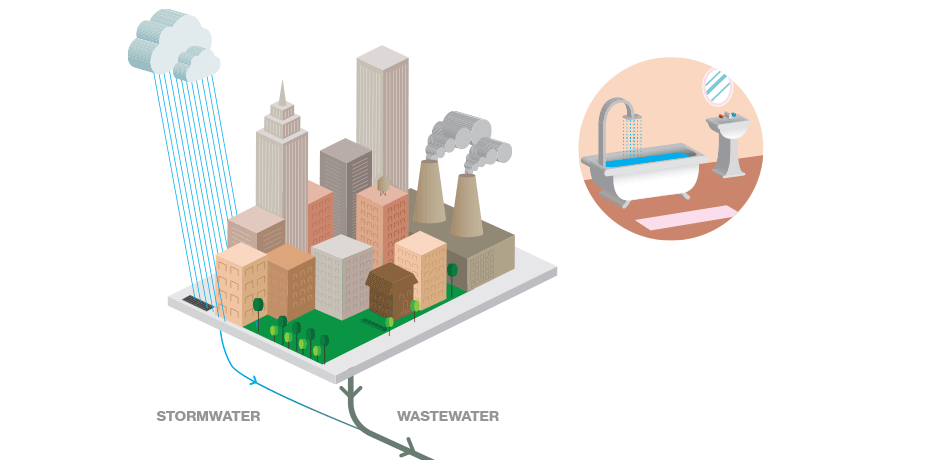Affordable Solutions for Large-Scale Waste Water Treatment Facilities
Affordable Solutions for Large-Scale Waste Water Treatment Facilities
Blog Article
Strategic Approaches to Boost Drainage Treatment Performance and Minimize Ecological Effect
In the world of drainage therapy, the pursuit for boosted efficiency and reduced environmental effect is a perpetual obstacle that demands calculated options. As society comes to grips with the imperative to take care of water resources sustainably, a nuanced technique becomes necessary. The combination of sophisticated therapy technologies, energy-efficient procedures, resource recovery methods, enhanced nutrient removal methods, and wise tracking and control systems represents a multifaceted framework for addressing these pushing problems. What exists at the core of this complex web of methods is the possible to change the method we approach waste water therapy, not just as a process of disposal, however as a useful opportunity for technology and ecological stewardship.
Advanced Treatment Technologies
Sophisticated membrane layer purification systems have changed innovative wastewater therapy processes, dramatically boosting the removal of contaminants. These ingenious systems function by forcing water via a semi-permeable membrane layer, successfully separating pollutants from the water stream. The membrane's tiny pores catch pollutants such as germs, viruses, and suspended solids, permitting just detoxified water to travel through. This innovation has confirmed to be highly reliable in eliminating a vast range of impurities, including pharmaceuticals, hefty steels, and organic substances, which are typically challenging to remove via standard therapy techniques.
In addition, membrane filtration systems use various advantages over conventional therapy methods. They need much less room, produce higher-quality effluent, and are a lot more immune to fluctuations in influent water quality. Additionally, these systems are very functional and can be conveniently incorporated into existing treatment plants or used as standalone units for decentralized applications. As the demand for clean water remains to rise, the adoption of innovative membrane layer filtering technologies is necessary to ensure lasting and efficient wastewater therapy techniques.
Energy-Efficient Processes
The integration of energy-efficient processes in wastewater therapy systems is vital for optimizing resource utilization and reducing operational expenses. One crucial approach to boosting energy performance in wastewater treatment is the usage of innovative oygenation systems, such as great bubble diffusers or surface aerators, which can improve oxygen transfer performance and reduce energy consumption.
In addition, enhancing process control and automation through the usage of sophisticated sensors and keeping an eye on systems can enhance total power effectiveness by readjusting procedures in real-time based on actual need and problems. Applying power audits and frequently keeping an eye on power efficiency signs are vital methods to recognize locations for enhancement and track energy-saving initiatives successfully. In general, the adoption of energy-efficient processes in wastewater therapy not just profits the atmosphere but also contributes to long-lasting price savings and functional sustainability.
Source Recovery Methods
With a concentrate on enhancing resource usage and sustainability in wastewater therapy systems, the implementation of source recuperation approaches arises as a crucial element in enhancing functional performance. Resource healing approaches in wastewater therapy include the recognition and extraction of valuable resources from the waste stream, thus turning what was as soon as taken into consideration waste right into a beneficial asset. By applying source healing methods such as nutrient removal and healing, power generation from raw material, and the production of reusable water, wastewater therapy plants can decrease environmental effect while taking full advantage of effectiveness.

Enhanced Nutrient Removal Methods
Implementing sophisticated nutrient elimination techniques is important for maximizing the effectiveness of wastewater therapy systems. Boosted nutrient removal plays a vital duty in reducing the environmental influence of cured effluent released right into water bodies. One of the essential methods made use of for improved nutrient removal is the procedure of organic nutrient elimination (BNR), which involves the removal of nitrogen and phosphorus via biological processes. This can be accomplished via the usage of specialized microbes that can convert nitrogen compounds right into inert nitrogen gas with denitrification, and accumulate phosphorus within their cells with a procedure called boosted biological phosphorus removal (EBPR)

In enhancement to BNR, progressed therapy approaches such as membrane layer bioreactors (MBRs) and built wetlands can likewise be employed to enhance nutrient removal efficiency. By incorporating these innovative nutrient removal methods into wastewater treatment industries, towns and systems can efficiently decrease nutrient pollution and secure the setting.
Smart Tracking and Control Equipment
Utilizing advanced technology, the integration of smart surveillance and control systems changes the operational efficiency of wastewater therapy centers. These systems include innovative sensing units and information analytics to continually check key parameters such as pH degrees, turbidity, liquified oxygen, and flow rates in real-time. By collecting and examining this data, operators can get beneficial understandings into the performance of the treatment procedures, making it possible for proactive changes to optimize therapy performance.
Smart monitoring and control systems additionally support remote surveillance abilities, enabling operators to access real-time information and control functions from off-site areas. This remote accessibility enhances operational versatility and responsiveness, making it possible for speedy treatments in situation of system breakdowns or variations in influent top quality. Moreover, the anticipating maintenance capabilities of these systems aid protect against tools failings and decrease downtime, eventually improving the overall about his dependability of wastewater therapy operations (Waste Water Treatment).
Conclusion
Finally, tactical strategies such as sophisticated therapy modern technologies, energy-efficient procedures, resource healing methods, boosted nutrient elimination methods, and smart surveillance and control systems play an essential role in enhancing wastewater therapy efficiency and minimizing ecological influence. By carrying out these methods, wastewater therapy plants can improve their overall efficiency, reduce energy consumption, recover useful resources, and ensure conformity with ecological policies. These methods are necessary for sustainable and reliable wastewater administration methods.

In verdict, critical strategies such as advanced treatment modern technologies, energy-efficient procedures, source healing strategies, enhanced nutrient removal techniques, and clever monitoring and control systems play a vital role in enhancing wastewater treatment effectiveness and reducing ecological influence.
Report this page